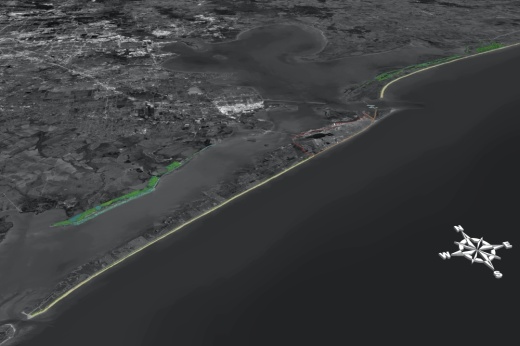According to a July 26 congressional press release, the Texas Coastal Spine Authorization Act, introduced by the legislators, will authorize the construction of the $29 billion series of projects aimed to protect the Texas coast, including Galveston, the Bay Area and Houston, from storm surge flooding during hurricanes.
“Protecting the Texas Gulf Coast isn’t just an important local priority; it’s a national imperative,” Cornyn said in the release. “Our coastal communities are home to millions of Texans and pivotal industries that fuel our country and economy. This bill will ensure our coastline has the necessary infrastructure to help protect against future storms, and I will continue fighting for this project.”
Cruz also voice approval of the project, also known as Coastal Spine or the Ike Dike.
“In Texas, we know how destructive storms and natural disasters can be. A coastal barrier protection system will reduce the impact of hurricanes and tropical storms and help keep Texas communities safer,” Cruz said in the release. “It’s not only an important safety measure, but it will save money in the long term by softening the destructive power of storms along the Gulf Coast. This is a win-win not just for Texans but for taxpayers nationwide.”
Weber added his support as well.
“The coastal barrier is a matter of national security. The Texas Gulf Coast is home to millions of people, countless homes and jobs, and numerous refineries. The Texas Coastal Spine Authorization Act will strengthen the resiliency of the Gulf Coast,” he said in the release. “It’s imperative that we complete this critical barrier protection as soon as possible, since it’s a question of when—not if—another big storm barrels up the upper Texas Gulf Coast.”
The coastal barrier project, which has been under study for years by the U.S. Army Corps of Engineers and others through the Coastal Texas Study, includes several projects, the most expensive of which is a series of navigable gates between Galveston Island and the Bolivar Peninsula. The gates will close during major storms, reducing the amount of storm surge able to flow into Galveston Bay.
In 2021, Cornyn praised the Corps chief's report of the study that made the project eligible to be authorized by Congress in the upcoming Water Resources and Development Act. Cornyn secured funding in the Bipartisan Budget Act of 2018 to ensure the study's completion, the release reads.





